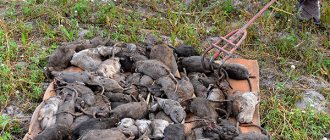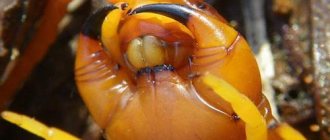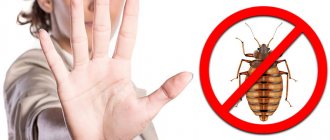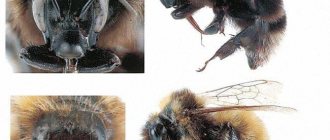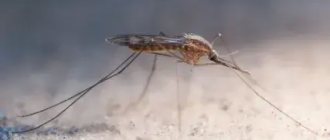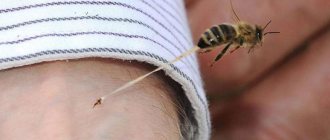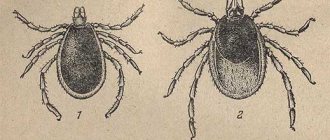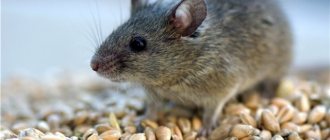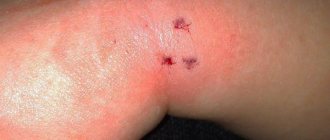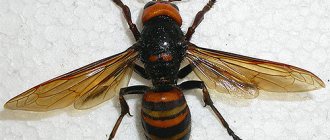Rats are one of the most common pests. Their habitat is located in densely populated cities, close to people, as this gives them constant access to food and water. Rats can attack humans and domestic animals.
The harm caused by these rodents has long been beyond doubt, because living so close to our homes, they not only spoil food, but can also gnaw wires and damage furniture and books. But some people are confident that these tailed pests are not limited to minor vandalism, but are also capable of a real deliberate attack on a person. But is this really so? We suggest you look into this issue.
When and why do rats attack people?
Despite the fact that rats prefer to live near people, they try not to meet them. But it happens that rats attack. Most often this is caused by the following reasons:
- the rodent is cornered and has no other way to escape;
- the rat reacts to aggression directed at it (if you shout at it, wave your hand or stick);
- the mother who protects the offspring is attacked;
- the rat is in a state of stress for a long time (because of this, even animals from a pet store can bite).
Bite
Much less often rat attacks on people are explained by the severe hunger that rodents experience. Even very hungry rats cannot eat a person, but they are quite capable of biting off a piece of skin or even meat.
In addition, a rat infected with rabies can attack a person. In this state, the animal experiences severe suffering, as a result it becomes aggressive and is no longer afraid of anyone.
Rodent lifestyle
Rats are members of the mouse family. This genus of rodents is very widespread; its various species live throughout the globe. Several centuries ago they were not in the USA, but along with the ships of settlers the animals arrived on this continent. Today, rats are found almost everywhere humans live. The most common are 2 types of these rodents: black and gray.
Probably every person has seen gray rats at least once in their life. They are quite large, reaching 30 cm in length, and have very strong teeth. These animals live in basements and ground floors.
Black rats are smaller in size, have lighter bodies and very tenacious fingers, due to which rodents easily make nests in attics, mezzanines, suspended ceilings and even in trees.
All rats are very fertile, they reproduce at a terrifying rate: a female gives birth to an average of 5 to 20 cubs at a time, and after 18-20 hours she is ready to mate again. That is, over a short life, the rodent increases the population by several tens of thousands of individuals. Fortunately, 95% of young animals die from cannibalism of their fellows, unfavorable climate or deratization.
Typically, pests live in populations of 200-300 individuals. At the same time, they are synanthropic, that is, they live next to a person and learn to interact with him. These pests lack spatial conservatism, meaning they easily colonize new territories.
How do rats attack?
Most often, rats bite people by attacking from a short distance. Before an attack, the animal prepares for some time, rising on its hind legs and swaying from side to side. Then it makes a warlike squeak and jumps. In this case, the rodent usually bites the leg, but more often the attack is a way to scare, so it can do without a bite.
If you try to catch a rat, it bites the hand extended to it. A pet rat may bite a finger, for example, if it does not like the way it is being held, or if you poke your fingers through the bars of the cage when the animal is not in the mood to communicate.
Sometimes rats gnaw the skin on the heels of sleeping people (this often happens in warm countries with homeless people sleeping on the street), for the time being this is done so carefully that the person does not feel that the rodent is biting and does not wake up. True, only until the sharp teeth sink into the soft tissue.
Suspected of destroying dinosaurs
What can I say, a rat is a bad neighbor for a person. She is not afraid of ruining her figure, and besides, she is not capable of starving (3-4 days without food is a death sentence for her). Therefore, he is always looking for something to snack on. In a year, she can eat up to 10 kg of food. And spoil it even more.
Many years ago, Americans conducted an experiment: in a food warehouse they gave rats complete freedom for two months. It is possible that after summing up the results they had to take large doses of sedatives.
It turned out that the rodents ate or spoiled hundreds of bags of coffee, 14 tons of flour, 200 tons of sugar and all the packs of pasta right from the cardboard packaging.
Scientists now strongly suspect that rats are to blame for the extinction of dinosaurs: they could well have sucked out the contents of laid eggs, thereby ending the glorious line of ancient reptiles. However, this is only a version, and it is not at all necessary to believe it.
Rat.
visualhunt.com
Differences between rat bites and bites of other animals
A rat bite looks like two rather deep, most often bleeding wounds, consisting of two closely spaced punctures - marks of the upper and lower incisors, respectively. It is from such a trail that one can understand that the attacking animal was a rat. It is true that it is quite difficult to distinguish a rat bite from the bite of another rodent, since they are very similar in appearance. True, the rat's teeth marks are larger.
But in general there is no special need for such a diagnosis, since bites of any rodents are equally dangerous and require similar treatment.
Guilty of negligent homicide
If humanity had the opportunity, he would have long ago wiped out every last rat from the face of the earth - well, simply based on the totality of the crimes committed before him.
Take only the 14th century. The population of Europe suffered terrible losses from the plague - about a third of the inhabitants, or 25 million people, went to another world. The culprit of the disease was identified as a rat - they write that some bishop called it the spawn of the devil, and another excommunicated it from the church (although, of course, it is unlikely that the church rat was a conscientious parishioner).
Meanwhile, the plague bacillus is carried not by the rats themselves, but by their fleas. And for a long time no one even tried to record these insects as accomplices in the crime. Moreover, scientists now believe that another rodent is to blame for that epidemic: the gerbil.
True, this does not really rehabilitate rats.
Rat.
visualhunt.com
Firstly, there is no doubt that the gray rat, in company with its fleas, worked to spread the plague already in the 19th century. Secondly, they still carry diseases personally - doctors have counted 40 dangerous infections that can pass from it to humans.
In 2022, rats from 31 rat houses in the United States infected 17 people in 11 states with the virus. The disease was expressed both in a form similar to a mild flu, and in the form of kidney failure - doctors believe that this infection could well lead the patient to death.
First actions after a bite
The first thing to do if bitten by a rat is to thoroughly rinse the affected area and then thoroughly treat it with an antiseptic. Any remedy will do - hydrogen peroxide, Miramistin, alcohol, Chlorhexidine.
But what you shouldn’t do if a rat bites you until you bleed is try to stop the bleeding. Firstly, deep wounds can bleed for a long time, and secondly, some pathogenic bacteria will come out with the blood.
After the wound is washed, it should be bandaged. This will help avoid mechanical damage and dirt. If the condition of the wound worsens (for example, inflammation or suppuration) or your health worsens, you should immediately consult a doctor.
Treatment of the wound
Symptoms of infection
Characteristic symptoms of diseases carried by rats:
- weakness;
- chills;
- temperature increase;
- headache;
- nausea, diarrhea, abdominal pain;
- insomnia;
- muscle contraction at the site of the bite;
- severe pain at the site of the bite (even if the wound has already healed).
Without treatment, some diseases can lead to severe consequences and even kill a person, so if alarming symptoms appear, you must urgently visit a doctor or call him at home.
The incubation period for diseases that can be caused by a rat bite ranges from 2-3 days to 2 weeks. If you feel unwell within this period, you should definitely tell your doctor about the bite. This information can be decisive in choosing the necessary tests and making a diagnosis.
Health hazard
The danger of rats lies not only in damaging property and destroying food supplies; rodents spread more than 80 terrible diseases. Rats are found in places that do not meet hygienic and sanitary standards. Basements, cellars, garbage cans, abandoned buildings, tunnels. Regardless, they are all dangerous to humans. Daily, bacteria, fungi.
On a note!
Viruses do not infect animals. Being carriers of dangerous diseases, the animals themselves feel great. The infection is transmitted through a rat bite with saliva, by contact, by exhalation with air. Often the mediators are pets. They become infected themselves after contact with rodents and infect humans.
Possible consequences of rat bites
Possible consequences of a rat bite are:
- scratches, abrasions;
- lacerated deep wounds;
- hematomas;
- bruising;
- In rare cases, a bite to the finger can cause a fracture.
Infection of the wound can cause suppuration. If the abscess is not opened in time, an ulcer, abscess and even gangrene may develop. In the most severe cases, there is a possibility of blood poisoning.
But the main danger of rat bites is the risk of contracting infectious diseases, including:
- sodoku (pathogenic microorganisms entering the body spread through the lymphatic tract, affecting internal organs - liver, kidneys, ovaries, adrenal glands, meninges);
- tetanus (a dangerous disease with a high mortality rate and a high probability of complications);
- leptospirosis (an acute infectious disease that affects capillaries, muscles, liver and kidneys, occurs with symptoms of fever and intoxication);
- pseudotuberculosis (the disease is characterized by damage to the liver and small intestine, the main symptoms are fever, intoxication, rash);
- rabies (a deadly disease that affects the brain).
Rabies virus
In addition, rat bites are dangerous because of the consequences for the human psyche. Many people develop severe phobias, which are very difficult to get rid of.
Parasitic diseases
Diseases caused by parasites are considered one of the most common in the world. They appear as a result of the activity of protozoa, helminths (worms), as well as lice, ticks and other similar creatures. All of these living organisms can be carried by rats and other rodents.
Methods of infection:
- direct contact with the rat;
- getting rodent feces into drinking water or food.
Asthma attacks
Because of rats, people suffering from this asthma may experience suffocation attacks. They occur as a result of an allergic reaction to rodent fur or waste products.
Allergic reactions
Rats, like many other animals, can cause allergies. In this case, the disease proceeds in a standard way and is accompanied by characteristic symptoms. These include:
- tearfulness;
- sneezing;
- rhinitis;
- rash.
In most cases, the causative agent is rat fur. However, there are cases where the cause of an allergic reaction was urine or dry excrement of a rodent.
Exacerbation of atopic dermatitis
Atopic dermatitis is a chronic skin disease that is caused by a hereditary predisposition. It is characterized by periodic redness of the skin, accompanied by severe itching. Most often, exacerbations of the problem occur when the patient comes into contact with an allergen. Rat droppings or fur act as an irritating factor.
Are the bites of ornamental rats dangerous?
Pets can also become aggressive. Most often, a bite from a domestic rat is associated either with the unbalanced character of the animal or with improper handling of it. If you are bitten by a domestic rat, you need to do exactly the same as if you are bitten by any rodent - wash, treat and bandage the wound.
The threat of contracting an infectious disease in this case is minimal. But if a decorative rat bites constantly, the first thing to do is to think about it and either change the conditions in which the animal is kept, or seriously engage in its upbringing.
The situation when a domestic rat bites until it bleeds is quite rare. More often, the rodent only bites the skin while playing or expressing dissatisfaction. A strong bite is most often provoked by pain caused to the animal.
Musophobia
This term refers to ratphobia, or an unconscious and uncontrollable fear of rats and mice. It should not be confused with aversion to rats, which develops more out of habit or the desire to follow generally accepted patterns of behavior. With musophobia, a person begins to panic at the sight of a rat, not being able to explain the reason for his fear and control himself.
It is easy to identify this symptom: it is enough for a person to show a neat decorative rat or mouse. If the patient begins to shake at the sight of her, it means he really has a phobia. If it turns out that only basement rats or only stories about mutant rats scare him, then we are not talking about illness here, and the fear turns out to be far-fetched.
Musophobia is treated using a rapprochement technique, which in simple terms can be called “knocking out a wedge with a wedge.” Simply put, the patient is shown rats, but first - cute decorative ones, better - baby rats, perhaps in videos, and then from afar and for a short time, and then gradually reduce the distance and increase the duration of contact.
With a competent medical approach, musophobia can be completely eliminated.
What to do if rats bite children?
A child who has been attacked by a rat must first be calmed down. Such a negative experience can be remembered for the rest of his life, causing the development of neuroses and fear of animals. The wound should be treated with an antiseptic, bandaged, and the child’s condition should be monitored for 1-2 weeks.
If rats have bitten children in a kindergarten or school, providing medical care to the injured children is not enough. It is necessary to bring information about the incident to the attention of the relevant authorities (district office of the SES, Rospotrebnadzor), demand an inspection and take measures based on its results.
If a rat bites your pet
An adult pet bitten by a rat usually does not need help from its owner. The animal will cope on its own by carefully licking the wound. Since the saliva of cats and dogs is a fairly strong antiseptic, prolonged licking will be quite sufficient for treatment. If the wound is deep or the pet is young, you can wash the wound, treat it with an antiseptic and, if possible, bandage it.
If the owner thinks that after a rat bite there have been changes in the behavior or condition of the animal, you should not pretend that nothing is happening, it is better to play it safe and consult a veterinarian.
Aliens
The ancestors of modern rats appeared about 35 million years ago. Rodents similar to modern ones spread across Europe at the end of the last millennium, they migrated from Arabia, and there from Central Asia and Southern China. With the development of navigation, the hardiest ones - black rats - swam into the holds of ships. They began to spread throughout the cities catastrophically quickly and destroyed their more intelligent relatives.
The black rats did not stop there and switched to people, infecting them with a deadly disease - in the middle of the 14th century, the “Black Death” - the plague - broke out in Europe. As a result of almost decades of epidemic, about 25 million people died - a third of Europe. Epidemics broke out in the 18th, 19th, and 20th centuries.
Gray rat. Meanwhile, a new species of rat was spreading across Europe - the gray one. She moved from East Asia and began to exterminate the black one. Rats appeared in Russia at the turn of the 17th–18th centuries, and then they practically did not reach Central and Eastern Siberia. But during one of the most famous rat invasions - besieged Leningrad - rodents literally filled the city. There was no one to fight them, since the dogs and cats were eaten by people. After the blockade was broken, they began to figure out how to cope with the invasion, and they brought 4 wagons of smoky cats from Yaroslavl, which were considered the best rat catchers. And then about 5 thousand more cats from Siberia, who helped finally get rid of rodents.
Rat. Photo: Pixabay
How to avoid being bitten?
To prevent a rat from biting you, just follow simple rules:
- try to avoid vacant lots and abandoned buildings, be careful when going down into basements and passing areas with garbage cans;
- when meeting a rodent, do not try to catch it, do not make sudden movements;
- Having discovered a nest with pups, do not touch them; the mother is most likely nearby and will rush to protect the cubs;
- if the rat behaves aggressively, you should carefully retreat (you can scare the animal away by splashing water at it).
Pet rats must be handled carefully so as not to hurt them - do not lift or pull the tail, do not squeeze too hard.
Control measures
Over many years of fighting against domestic rodents, people have mastered several basic ways to combat them. They turn homes, or at least food storage facilities, into impregnable fortresses. If gray enemies do appear, then spring mousetraps and glue traps, scarers and poisoned baits are used. At the same time, it is much more difficult to catch, scare away or poison rats than mice. Therefore, people have to constantly invent new means - this is the only way to win the next round of the fight against the arrogant, toothy invaders.
Sources
- https://sesrus.ru/chem-opasny-krysy
- https://notklop.ru/krysy/o-krysah/chem-opasny-krysy/
- https://krot911.ru/krysy/o-krysax/chem-krysy-opasny-dlya-cheloveka.html
- https://apest.ru/krysy/vse-o-krysah/chem-opasny-krysy-dlya-cheloveka/
- https://felisov.ru/uncategorized/chem-opasny-krysy.html
- https://GdeKlop.ru/krysy/napadayut-na-lyudej/
- https://klopam-net.ru/krysy-i-myshi/mozhet-li-krysa-napast-na-spyashhego-cheloveka.html
- https://parazitdoma.ru/krysy-i-myshi/ukus-krysy
- https://ProVyzhivanie.ru/pervaya-pomoshh/ukus-krysy
- https://aif.ru/society/nature/1358516
[collapse]
